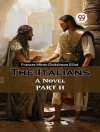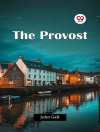In ‘Jeff Briggs’s Love Story, ‘ Bret Harte crafts a poignant narrative that delves into the complexities of love set against the backdrop of the American West during the Gold Rush era. Employing a distinctive blend of naturalism and romanticism, Harte portrays rich characterizations through dialogue imbued with local dialects, vividly illuminating the cultural dynamics of the time. The novella juxtaposes the idealism of love with the harsh realities of frontier life, revealing both the beauty and tragedy of human connections amidst challenging circumstances. Bret Harte, an influential figure in American literature, is renowned for his evocative depictions of the California experience. His own experiences during the Gold Rush, combined with his keen understanding of human emotion and societal challenges, inform his storytelling. Harte’s work often reflects a deep empathy for his characters, shaped by his observations of everyday struggles and aspirations, which undoubtedly resonates in ‘Jeff Briggs’s Love Story.’ Harte’s narrative is a compelling exploration of love and sacrifice that remains relevant today. Readers are encouraged to immerse themselves in this richly textured tale, which not only provides a window into the past but also echoes timeless themes of resilience and the quest for meaningful connections.
Circa l’autore
Bret Harte (1836–1902) was an influential American author and poet, renowned for his adept storytelling and his vivid portrayal of the American West. With a literary career beginning in the 1860s, Harte left an indelible mark on Western fiction. His short stories and prose often carried the authentic dialects, landscapes, and character types of the California Gold Rush era, showcasing the complex human and cultural experiences of this tumultuous period of American history.
One of his memorable works includes ‘Jeff Briggs’s Love Story’ (1874), which is a testament to his literary style that often weaves elements of romance with the rough frontier life. Harte’s writing is characterized by its local color, realism, and poignant depiction of life, frequently articulating the intersection of the American spirit and the untamed wilderness. Through narrative devices like irony and elaborate descriptions, Harte both entertained and offered sharp social commentary. His other notable works, such as ‘The Luck of Roaring Camp’ (1868) and ‘The Outcasts of Poker Flat’ (1869), further exemplify his gift for capturing the essence of Western life. Harte’s influence was such that he helped form the American perception of the West, and his work remains a cornerstone in the foundation of American Western literature.












